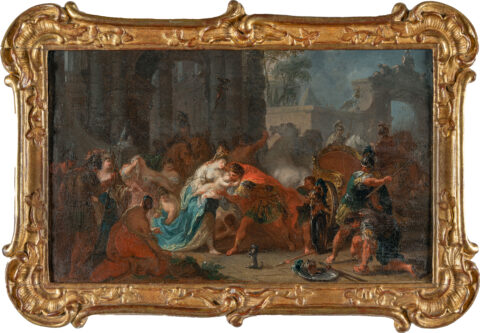Franz Anton Maulbertsch
After his first training by his father Anton, Franz Anton Maulbertsch entered the Academy in Vienna in 1739. There he took part in the drawing competitions in 1740 and 1741 without success, but in 1750 he won first prize with an allegory of the Academy. At the same time, he produced his first altarpieces, in which he took inspiration from Venetian artists – conveyed through prints – and South German-Austrian artists, especially Paul Troger. His later altarpieces are characterised by an expressive synthesis of Venetian colouring and Rembrandt’s chiaroscuro.
His first major commission in 1752/53 for the frescoes in the Piarist Church in Vienna already shows Maulbertsch’s independent style – dynamic groups of figures of great expressiveness dominate the canopy of saints and become a characteristic feature of his style. What followed was a steep career with numerous large commissions in the sacred field, which Maulbertsch mastered with the help of a well-organised workshop. In the following years he was active not only in Austria (Heiligenkreuz-Gutenbrunn, Schwechat) but also in present-day Moravia (Nikolsburg, Kremsier, Klosterbruck) and Hungary (Sümeg, Györ, Pápa, Szombathely). In them, the expressive and colouristic element is emphasised even more strongly; at the same time, from around 1770 Maulbertsch made a change towards Baroque Classicism, as shown in the late frescoes in Waitzen, Raab and Innsbruck.




